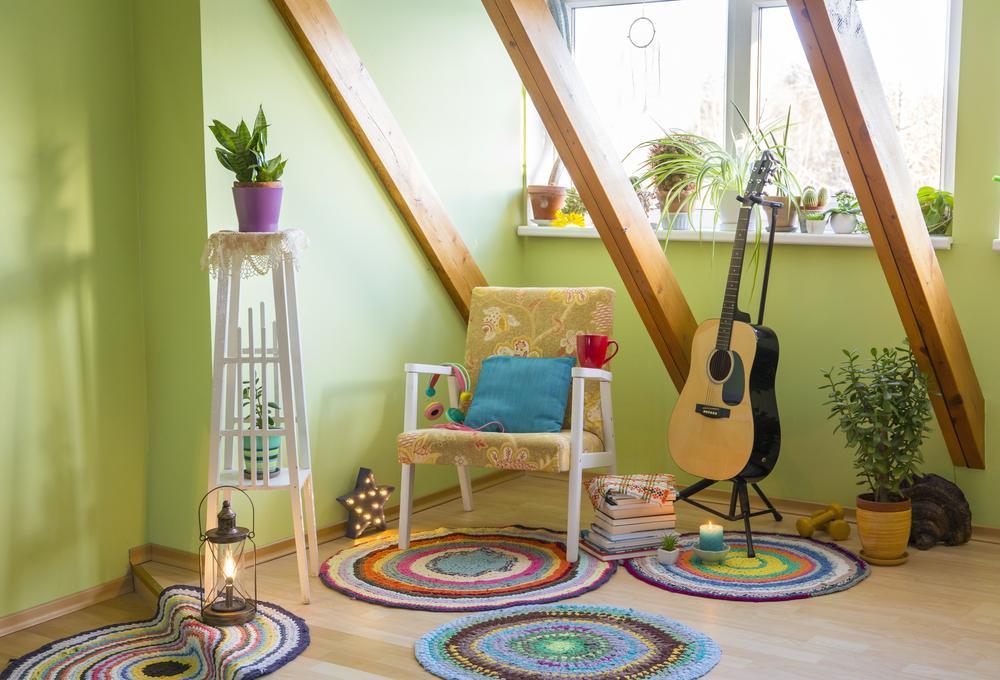Bold prints and patterns, vibrant colour, and a more-is-more ethos are all hallmarks of maximalist interior design. In small homes, though, If not done correctly, it might feel “too much” or even like a hoarder’s cave. And, while minimalism is frequently associated with small rooms, maximalism can be done brilliantly in any setting.

The maximalist movement arose as a reaction to the minimalist trend, which emphasises practicality above comfort. Maximalism, on the other hand, is all about surrounding oneself with stuff that make you feel comfortable and joyful. Maximalism provides a level of creative flexibility not seen in many interior designs, making it ideal for collectors and individuals who like showcasing their hobbies. Our tips and tactics will be ideal for you if you’re seeking maximalist design ideas for a tiny space.
Increase the amount of natural light in the room
When done incorrectly, maximalism may appear gloomy and claustrophobic rather than creative. However, by increasing the quantity of natural light in your room, you may easily avoid this. Despite the quantity of décor and furniture, natural light not only makes the area appear bigger and brighter, but it also makes it feel more open and airier. Natural light has an essential role in alleviating the claustrophobic sensation in smaller rooms.
By choosing larger windows, you can enhance the amount of natural light in your home. Floor to ceiling windows help to balance out the features in maximalist interior design. In rare cases, skylights or glass roofs can be used if your room is not south or east facing and does not receive direct sunshine. This breaks up the arrangement and gives your room a more dynamic and layered appearance. Natural light also helps to relieve tension and improve your mood. Maximalism plays a significant factor in strengthening the quantity of light reflected in your space. Light wood flooring is believed to reflect light better than dark wood flooring. Another approach to save room while keeping the appearance is to place your television on the wall. You can get your TV wall mounted by professionals by clicking here.
Patterns and colours
The creation of layers and depth in maximalist interior design is primarily reliant on varied colours, textures, and décor. The goal is to create a dynamic and creative environment that both inspires and relaxes the user. Don’t be scared to be daring with your pattern choices. If you’re not convinced about textured wallpaper, start with your furnishings. This will give it a dynamic look while also allowing you to avoid committing to a specific type of wall. Removable vinyl papers, on the other hand, may be used to create a variety of styles since they are inexpensive and simple to apply and remove.
The objective is to choose backgrounds and concepts that not only complement your décor but also serve as a focus point in themselves. If you don’t want to opt for textured walls, you may add patterns using carpets, pillows, and blankets. When it comes to painting our walls, we should never select a colour solely on a single sample. The colour varies with the changing of the light throughout the day. Before picking a paint colour, observe the colour throughout the day and in various sun locations. Don’t be scared to experiment with deeper hues. While they absorb light, they also blur the room’s borders, making it appear larger than it actually is.
Opt for an open floor layout.
You’ll need all the room you can get with a maximalist interior design, so choosing an open plan is one of the finest options. Aside from the added room, an open layout encourages you to be as creative as possible. Colour blocking techniques may be used to create divisions for different zones if you opt to go open plan. This may be done with different carpets or on the walls. You may also use contrasting wallpapers or furniture to create depth and character by stacking rugs. The benefit of maximalist design is that there are no rules, allowing you to create whatever makes you happy.
The open plan fits with maximalism because it allows individuals to add their personalities into their spaces, giving them more flavour and character. Broken plan spaces are an alternative to open plan spaces if you want comparable themes. These provide the seclusion and delimited space that closed plans provide, as well as free space for creativity.
However, open-plan living is not for everyone. If you work from home and have children or pets, it is recommended that you set up a room for your home office rather than working in an open area. This will provide you with enough space to work while also enabling you to have an open area.
(Image Source: depositphotos.com)





